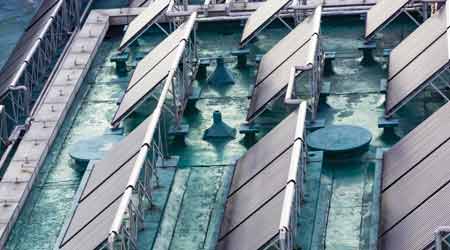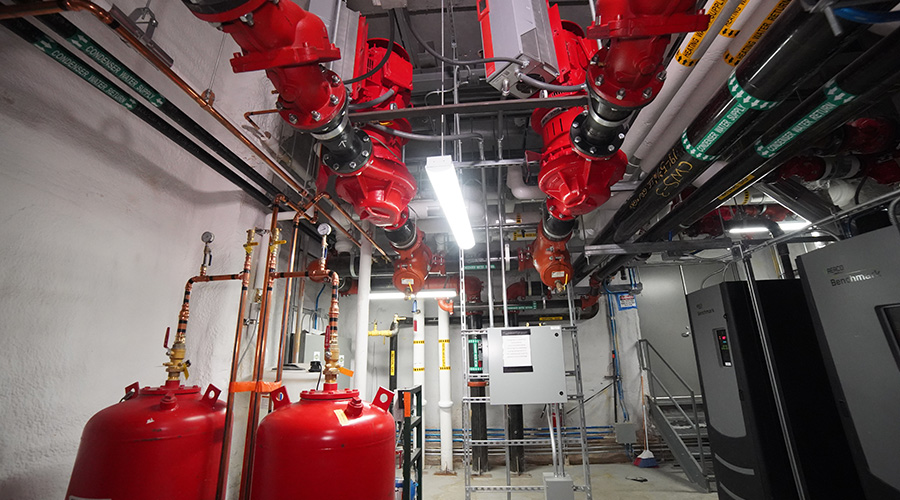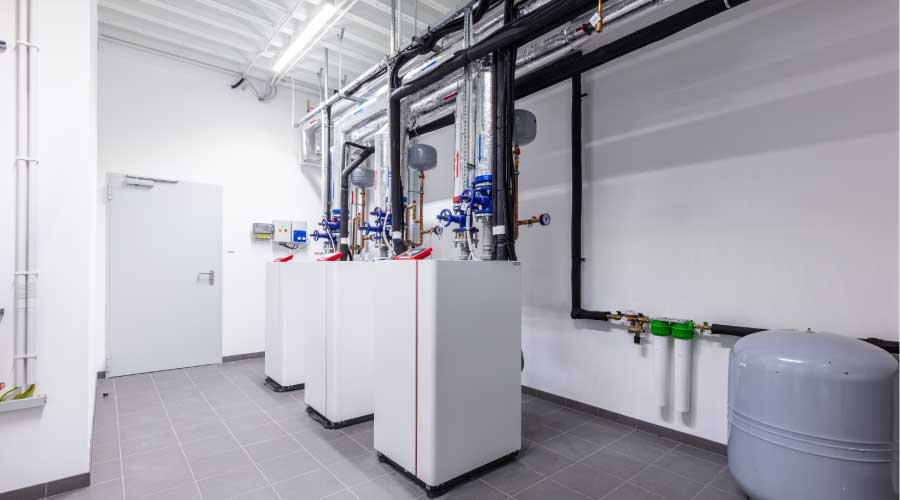 Solar thermal water heaters are a mature technology that is worth considering in many facilities.
Solar thermal water heaters are a mature technology that is worth considering in many facilities.Advances in Technology Drive Domestic Hot Water Choices
From tankless to solar thermal to low-mass modulating water heaters, new technology offers some exciting options for facility managers.
There are some interesting developments trending in domestic hot water technology, with some of them gaining ground rapidly. Instantaneous “on-demand” water heaters have been available for many years and have been utilized with mixed success in a number of applications, but lately the “on-demand” category options have exploded due to the development of smaller inexpensive modulating units produced in large volumes by Asian factories.
On one end of the scale are large, copper or steel water tube units up to 2 Million Btuh and beyond, produced mostly in North America. Hotels were an early adopter of central low-mass modulating water heaters due to the need to deliver large volumes of hot water intermittently — however, this strategy has come under scrutiny because of the distribution energy penalties mentioned above. (Low-mass refers primarily to the large copper tube potable water boilers with modulating burners and no thermal storage tanks. They basically depend on building piping mass and volume to dampen temperature swings and absorb short-cycling.)
The newer “tankless” units start as low as 90 thousand Btuh and were originally intended for residential use. However, when the Asian manufacturers partnered with North American manufacturers and sales networks, new applications for these heaters developed rapidly. Commercial units (up to 200,000 Btuh) can easily be combined in multiple arrays to provide enough hot water for even the largest buildings. Manufacturers active in this sector have developed pre-engineered packages which include mounting racks, venting and piping kits, and controls – a single source supply for all of the bits and pieces needed for a trouble-free installation.
Decentralization of larger systems using on-demand heaters is starting to gain interest because it can eliminate many of the problems associated with extensive distribution and recirculation piping. Decentralization can be very difficult to accomplish in retrofit situations due to structural issues of most existing buildings, so look to new construction to be the first sector to implement this strategy widely.
Although multiple mechanical rooms scattered throughout a building may seem counterintuitive, careful coordination between building owners, tenants, architects, and mechanical engineers can help ensure the success of this approach. Gas-fired or electric on-demand heaters are very compact and quiet, and the energy source is piped or wired directly to the appliance. Venting of gas-fired units can present challenges, requiring heaters to be installed close to the outside of a building envelope. Mechanical components are compact and simplified, so remote mechanical rooms often need be no bigger than a closet. Domestic hot water distribution becomes “regional” within a building, so distances and pipe sizes are reduced, saving on pumping energy and thermal losses. BAS technology has helped make this type of de-centralization more practical, giving operators the ability to monitor and adjust all of this equipment from a central location.
At the extreme end of decentralization, individual point-of-use water heaters (primarily electric resistance heaters), dedicated to single fixtures or washroom groups are a very popular and well-developed technology. Dedicated point-of-use may well be the system of the future as low-flow fixtures and energy conservation measures further come into play.
Solar thermal options are worth considering in many instances and should be much more popular. It is well worth consulting with solar thermal experts prior to making final decisions on domestic hot water choices. The technology is mature and simple, but the first cost of these systems combined with the amount of real estate needed for the solar panels and mechanical room equipment often turn building owners away. As photovoltaic panel arrays become more affordable and popular, solar thermal panels are competing with them for the sunny spots. Solar panels installed in highly visible locations can elicit two opposite reactions – some owners and tenants love how it “greens up” their image, others can’t stand the look of them.
Air-to-water heat pumps are starting to become widely available in many sizes. They are combined with domestic hot water storage tanks to allow long and efficient compressor cycles. Recovery times are generally lengthy, so they are not normally considered for constant-use applications. One interesting bonus, however, is that they can contribute to cooling the building in warmer weather. With adequate volumes for storage, these heaters can be controlled to run during off-peak electrical periods. As these heaters become more popular, BAS software developers will certainly come up with a variety of clever strategies to use off-peak power to heat domestic water and cool the space in a flywheel effect. BAS systems have great potential to give building owners significant energy and water savings in all aspects of domestic hot water production and distribution.
Domestic-hot-water generation is a major cost for many facilities. The safety and reliability of these systems is paramount and cannot be compromised. Energy conservation measures are becoming a necessity. The time and expense of undertaking a detailed analysis and follow-up consultation with engineers, manufacturers, suppliers, and mechanical contractors specializing in this field will pay big dividends for any building owner.
Roy Collver has more than 40 years experience in the HVAC industry. He specializes in hydronics, with a tight focus on boiler technology, controls, and gas combustion. In addition to writing and training about HVAC-related subjects, he works in construction administration for mechanical engineering firms.
Email comments and questions to edward.sullivan@tradepress.com.
Related Topics:
















